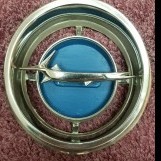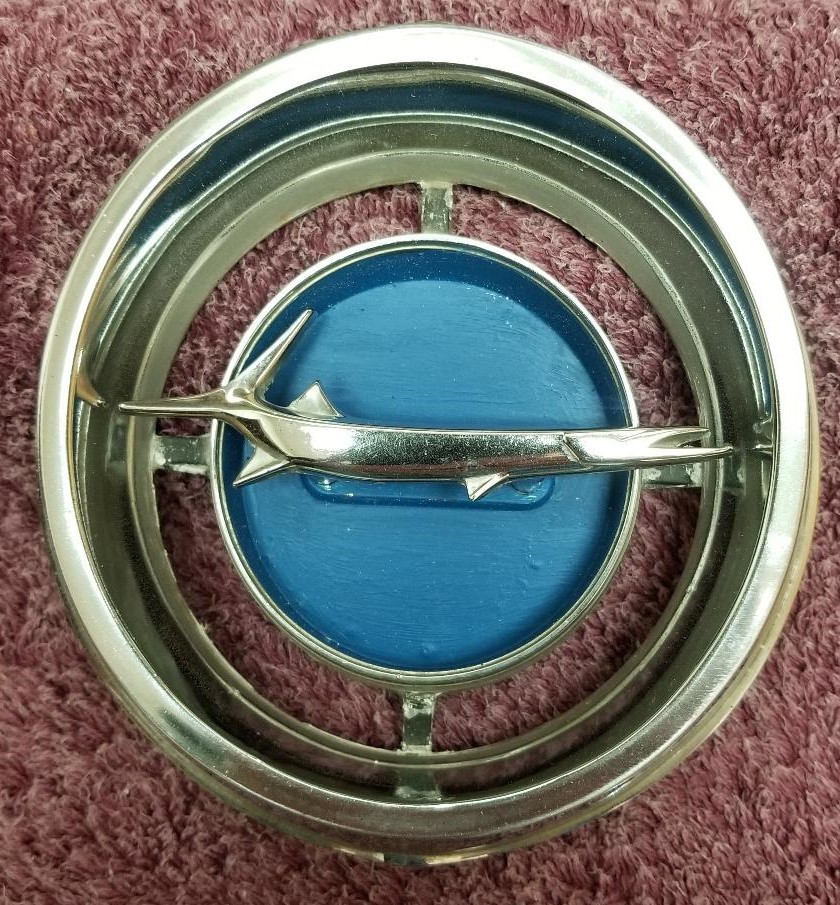-
Posts
390 -
Joined
-
Last visited
Content Type
Forums
Detector Prospector Home
Detector Database
Downloads
Everything posted by cudamark
-
To answer your other questions, a bigger coil will usually give you a bit better depth, but, they are also worse when it comes to target separation and masking. There will also be a difference between mono and DD coils on those subjects too.
-

Simplex Versus Vanquish At The Beach
cudamark replied to Steve Herschbach's topic in Metal Detector Advice & Comparisons
I would have liked to see the test done in actual wet sand or shallow water, and not just slightly damp sand. Get down where when you scoop out some sand, water starts to fill the hole. That would be a better test to see what it would do in a salt environment. -
Same experience here too. I just attributed it to scattered ground mineralzation, or the tiniest of metal (such as the iron fuzz you get on a scoop magnet at the beach) It doesn't seem to effect the operation of the detector, so, I never investigated it any further. I've tried silent search in all the detectors I've owned that had that option, but, never got used to it. I always use a threshold now. I just think it gives me more information. I don't mind knowing that there is a "bad" target in the ground. It can sometimes alert me to a good target close by. In the past, with some machines, running no threshold would sometimes not respond to a deep, barely perceptible target. It just wouldn't break the threshold to make a sound, whereas, if you have a threshold, you could hear the slight variation in the threshold tone. Since a threshold tone doesn't bother me, I'll continue to use, since it doesn't appear to hurt anything doing so.
-
Your hearing must be a lot better than mine. Tabs, nickels, some slaw, melted aluminum can nuggets,and gold rings all sound about the same to me. If I get a 14 or higher, I know it's not a nickel, but it could be any of the other three. At the beach they all get scooped. Quicker and easy that way, and it won't be there the next time I hunt that beach.
-

I’m Curious About This Ring
cudamark replied to Rick K - First Member's topic in Metal Detecting For Jewelry
Is the ring gold? what purity? -
I'd rather not deal with companies that believe stealing is all fair game. I avoid buying Chinese products as much as possible, therefor, Quest would be toward the bottom (if not the bottom) of my list regardless of it's quality and/or performance.
-
Pretty good test, as air tests go. I would have liked to know the individual settings on the machines to see if we're comparing apples to apples. Coil size is another variable that skews the test. The last test didn't show what the 11" Equinox coil would do, and I don't know what the recovery speed or iron bias settings were either. I often hunt around fire rings at the beach and find by moving the coil real slow with high recovery speed and high iron bias settings, you can pick good targets out of a carpet of nails. Not uncommon for me to get a slight high tone chirp among the iron grunts, scoop, and find a dozen nails in with a coin or other non-ferrous target. Naturally, the smaller the coil, the easier it is to do that, but, even with the 12X15" coil, I can still hunt effectively in that situation. You just have to really slow down and when you get a chirp, barely wiggle the coil to lock in on the good target. A full sweep won't do it.
-

Vanquish Vs Simplex Vs Apex
cudamark replied to Steve Herschbach's topic in Metal Detector Advice & Comparisons
Fun and interesting video, but, it would have been better with a REAL head to head comparison and not just random individual finds. Why not compare each signal with each detector BEFORE they're dug to see what audio and I.D. signals look and sound like. He didn't really remark on how chatty the field was with the Vanquish or his buddy's Simplex, just the Apex. How would the Apex have been with the sensitivity turned down a bit to make it stable? What were the settings on the Vanquish and Simplex? Just from what little I could glean out of this rather limited test, I would choose the Vanquish.....or maybe the Simplex, but, the finds could have been random luck or operator experience/expertise. -

Who Is (your) Detecting Hero Or Mentor ??
cudamark replied to dogodog's topic in Metal Detecting For Coins & Relics
My definition of "Hero" is probably different from most (I use that term very sparingly), but, the person that helped me early on to get into this hobby, and who I thank and think about to this day would be......My grandmother who gave me my uncle's partial penny collection that he no longer wanted, when I was 9. That started me on my treasure hunting career. When I started detecting over 50 years ago, there weren't that many people I would consider mentors, or even advisors. I pretty much learned by doing. Even though I didn't know them personally, the pioneers in this hobby such as Mel Fisher and Charles Garrett were important to me too as well as the editors and contributors to the treasure magazines that I read religiously . Once I started finding other detecting buddies with the same passion, we learned from each other. Jack R., John D, and especially Dave P, DIP (Detect In Peace) guys. All three left this earth way to early. We had some great finds and times together. Today, we have some great websites like this one where information can flow from those who know, to those of us still learning (like me!) To all those who contribute to this knowledge, thank you! -

Minelab 2020 Full Year Report
cudamark replied to Steve Herschbach's topic in Minelab Metal Detectors
Wow, I didn't realize how big the markets was in Africa......and how little it is in South America. -
Yup, I got my Tony Eisenhower waterproof headphones before any of the others were even available. Still using them!
-

Ole Beechnut Batteries & Stuff
cudamark replied to Carolina's topic in First Texas - Bounty Hunter, Fisher & Teknetics
How did I not get on your battery list? I must have been sleeping and not seen when you had them available. I was hoping to get one from my first hunt on! -

Video - Understanding Iron Masking And Target ID
cudamark replied to Steve Herschbach's topic in Garrett Metal Detectors
All well and good in a test garden. Real life, where the targets are a different depths and orientations are another matter. Add various degrees of corrosion and non-ferrous trash, and that I.D. averaging is going to be a problem.....not unlike some other machines. The quick processor will help however, as would a small coil. -

Minelab Eq 600 Back From Service
cudamark replied to South Padre Treasure's topic in Minelab Equinox Forum
You still have the 20 and 40 khz working for you in multi, just not as a stand alone single frequency. -

Minelab Equinox 800. Field 2 At The Beach
cudamark replied to GhostLands's topic in Minelab Equinox Forum
I normally run Park 1(all metal, 50 tone, IB F2@5) in the dry sand and only change to Beach 2 when I hit the wet sand. In the original software version, I would start to get chatter as soon as I hit damp sand. Next version, I could sometimes make it all the way to the really wet sand. Now, with the latest version, I can sometimes search in wet sand in Park 1 without issue or a change in sensitivity (usually 20). In the saltwater, it's still Beach 2 however. I'll have to try Field 2 and see what it's like with the latest software. -
If there's a VDI you don't want to see or hear, hit the accept/reject button in the upper right of the keypad. Not something I recommend in most cases. There's gold or silver at just about every number. I realize that some sites might be paved with a particular trash target that you want to avoid though......
-
If I had a relative that showed some interest, I'd give the items to them. Otherwise, historical items to a museum, if they wanted them. Most of the time, unless it's a fantastic find, they won't want them, as, they have drawers of good stuff they don't even display. More common items that are too good to throw away I'd take to a swap meet and sell them. People will buy anything if the price is right. Donate whatever doesn't sell to charity and take the tax writeoff.
-
I've used the F2 setting pegged at 9 quite a bit and haven't seen any down side to doing it......yet anyway. I'm still getting tiny foil non-ferrous readings of 1 in modes Park 1 and 2; Field 2, and Beach 1 and 2. I'll try to remember to experiment with Field 1 (which I almost never use) and the Gold modes. My only concern might be what effect it would have at depth.....or maybe in depth would be a better term. In using F2 @9 I don't "feel" it's detrimental, but, maybe it is and I haven't noticed it.
-
Not quite. I'll try re-wrapping my coil wire so that it runs straight up the shaft. Maybe that will help my instability problem. My symptoms are the same as Deborah's. It doesn't matter which settings I used, it chatted so much you had a hard time telling what was a signal and what was just a false.
-

Apex Unbiased Field Testing
cudamark replied to Jeff McClendon's topic in Metal Detector Advice & Comparisons
Doesn't look like anything I'd want to spend money on either. I wonder what the sound and target I.D. would be like without running it in all metal. I agree the sounds it makes would grate on my ears. -

My New Scoopal Sand Scoop
cudamark replied to Steve Herschbach's topic in Metal Detecting For Jewelry
I use the peel and stick anti-slip strips for a bathtub on my handles. Real easy to replace or add new ones when needed. -

Ongoing Equinox Coil Ear Breakage Issue
cudamark replied to Bill (S. CA)'s topic in Minelab Equinox Forum
I always thought that the current most common coil/clevis design should be reversed. Beefed up and reversed to be exact. The coil itself should not be the part with "ears". Make the coil with a solid hub a couple inches wide. Have the ears on the clevis. Have the clevis replaceable on the shaft and supply an extra one with each detector purchase. The new Fisher Impulse AQ has this type of clevis, although they still use ears on the coil. A better design, since there is a bolt/nut on each side and not just one pinching both sides toward the middle, so, no side strain. It still has fairly thin ears on both parts, but, so far, no issues with mine. -
Or, as my father used to say, "it's better to be pissed off, than pissed on"





